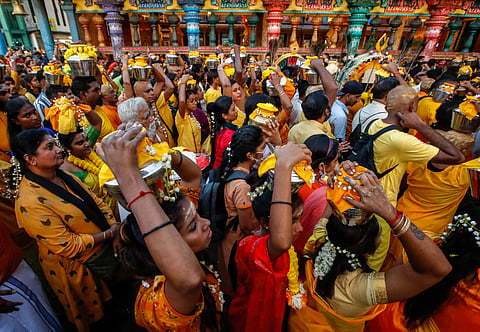The ‘Madrasi’ in Malaysia
The world of Malaysian middle class Tamils is curiously free of much of the complexity that marks the life of diaspora. There is barely any trace of the cultural chaos that qualifies a lot of immigrants elsewhere, as Malaysian Tamils, whether 'Madrasi' or Ceylonese, betray little nostalgia for the legendary homeland or the green coconut trees there. While Prime Minister Mahathir Mohammed's vision of 'Bangsa Malaysia' (a united Malaysian nation) by 2020 CE may be a long way from becoming a reality, Malaysian Tamils already have more in common with their Malay neighbours in Petaling Jaya or Brickfields than with their extended families in Madras or Vavuniya. And, while they do face a cultural predicament, it is one that has little to do with their relationship with 'home'.
The cultural divide in this case has more to do with such fine points as the use of coconut turmeric gravy versus sambar in the delicious puttu mayam. And the debate still rages on whether appam tastes better when made with hot coconut milk or a mix of cold coconut milk and flour. The strain is between the two overlapping, yet distinct groups that constitute the fledgling middle class Tamil diaspora in Malaysia: Tamils of mainland Indian origin and Tamils of north Ceylonese origin, each with its own culture, class, and home-grown recipe for traditional Tamil cuisine. The Ceylonese have sought to distance themselves from the Indian Tamils along class lines and the Indians, in turn, detest their one-time close association with the British colonisers, leading to pejorative jokes, chides and cultural prejudices within the community. Since the Sri Lankan Eelam war in 1983, there has been some sense of a unifying cause, but the old differences continue to fester.

